-
 bitcoin
bitcoin $112195.049338 USD
2.42% -
 ethereum
ethereum $4124.915858 USD
2.81% -
 tether
tether $1.000570 USD
0.02% -
 xrp
xrp $2.861568 USD
2.25% -
 bnb
bnb $1000.346670 USD
3.04% -
 solana
solana $209.070819 USD
3.38% -
 usd-coin
usd-coin $0.999870 USD
0.02% -
 dogecoin
dogecoin $0.235379 USD
2.65% -
 tron
tron $0.335681 USD
-0.20% -
 cardano
cardano $0.803501 USD
3.38% -
 hyperliquid
hyperliquid $47.120881 USD
3.56% -
 chainlink
chainlink $21.501300 USD
3.44% -
 ethena-usde
ethena-usde $1.000571 USD
0.02% -
 avalanche
avalanche $29.793378 USD
3.62% -
 stellar
stellar $0.366964 USD
2.42%
How to overclock a GPU safely for increased mining hashrate?
Overclocking your GPU can boost mining hashrate, but must be done carefully to avoid overheating, instability, or hardware damage.
Aug 07, 2025 at 12:50 pm
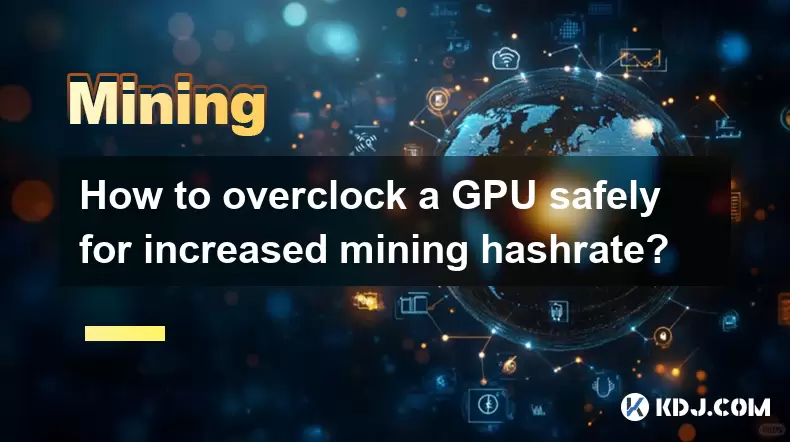
Understanding GPU Overclocking in Cryptocurrency Mining
Overclocking a GPU (Graphics Processing Unit) involves adjusting its core clock, memory clock, and voltage settings to exceed factory defaults, aiming to increase mining hashrate. In the context of cryptocurrency mining, higher hashrate directly translates to more computational power dedicated to solving cryptographic puzzles, which increases the probability of earning block rewards. However, pushing hardware beyond its designed limits introduces risks such as thermal throttling, hardware degradation, or permanent damage if not done correctly. The key to safe overclocking lies in incremental adjustments, monitoring system feedback, and maintaining stable operating temperatures.
Essential Tools for Safe GPU Overclocking
Before modifying any settings, miners must equip themselves with reliable software tools. These tools allow precise control over GPU parameters and real-time monitoring of performance metrics. The most widely used applications include:
- MSI Afterburner: Offers full control over core clock, memory clock, power limit, and fan speed. It supports on-the-fly adjustments and includes an in-game overlay to monitor temperature and usage.
- AMD Radeon Software (for AMD cards): Provides built-in tuning features for Radeon GPUs, including undervolting and clock adjustments.
- NVIDIA Inspector (for NVIDIA cards): Allows deep customization of GPU BIOS-level settings, though it is more advanced and carries higher risk.
- HWiNFO64: Delivers detailed sensor readings such as temperature, power draw, fan RPM, and hotspot detection.
- Mining software like PhoenixMiner, T-Rex, or GMiner: These display actual hashrate output and help evaluate the effectiveness of overclocking changes.
Each of these tools plays a role in ensuring that overclocking remains within safe boundaries by providing feedback on stability and thermal performance.
Step-by-Step Process to Overclock a GPU for Mining
Overclocking should never be done in large jumps. Instead, apply gradual changes and test stability after each adjustment. Follow this structured approach:
- Start with default settings: Ensure the GPU is running at stock speeds before beginning. Run a mining benchmark to establish a baseline hashrate and temperature.
- Increase power limit: Raise the power limit slider in MSI Afterburner to 100–110% to allow the GPU to draw more power when needed, which supports higher clocks.
- Adjust core clock: Reduce the core clock by –50 MHz initially (undervolting). Many modern GPUs perform better with slightly lower core clocks and higher memory clocks, improving efficiency.
- Increase memory clock: Raise the memory clock in increments of +50 MHz. After each change, run the mining software for at least 15 minutes to check for stability.
- Monitor for artifacts and crashes: Visual glitches on screen or miner crashes indicate instability. If either occurs, reduce the memory clock by –25 MHz and retest.
- Observe temperature: Keep GPU junction temperature below 85°C. Use HWiNFO64 to monitor hotspot temperatures, which can exceed average readings.
- Tune fan curve: Customize the fan curve to maintain temperatures between 65–75°C under load. Higher fan speeds reduce heat but increase noise and wear.
- Test for 24 hours: Once a stable configuration is reached, run continuous mining for a full day to ensure no late-stage crashes or thermal throttling.
This iterative method ensures that the final settings are both effective and sustainable.
Managing Heat and Power Consumption
Heat is the primary enemy of stable overclocking. Excessive temperatures trigger thermal throttling, which reduces clock speeds automatically and negates any performance gains. To mitigate this:
- Ensure adequate case ventilation: Position the mining rig in a well-ventilated area. Use open-air racks instead of enclosed cases.
- Clean dust regularly: Dust buildup on heatsinks and fans insulates heat, reducing cooling efficiency.
- Use thermal paste replacement: After extended use, factory thermal paste degrades. Reapplying high-quality paste like Arctic MX-4 or Noctua NT-H2 improves heat transfer.
- Monitor power draw: Use a watt-meter to measure total system consumption. Overclocking can increase power usage significantly, affecting profitability if electricity costs are high.
- Balance efficiency: Aim for the highest MH/s per watt ratio. A slightly lower hashrate with much lower power consumption can be more profitable.
Maintaining thermal and electrical balance is critical to long-term mining success.
Avoiding Common Overclocking Pitfalls
Many miners rush into aggressive settings, leading to avoidable failures. Common mistakes include:
- Ignoring memory temperature: GDDR6/GDDR6X memory can overheat independently of the GPU core. Some tools don’t display memory junction temperature, leading to undetected overheating.
- Overvolting without cooling: Increasing voltage boosts performance but dramatically increases heat output. Without enhanced cooling, this leads to rapid degradation.
- Using unstable BIOS profiles: Flashing custom VBIOS files can unlock higher clocks but risks bricking the GPU if done incorrectly.
- Neglecting driver optimization: Use minimalist drivers like NVIDIA’s Studio drivers or clean AMD Adrenalin installs without bloatware. Mining-specific drivers reduce overhead.
- Skipping stress tests: Assuming stability after 10 minutes of mining is insufficient. Extended testing reveals memory errors that occur only under prolonged load.
Awareness of these pitfalls helps maintain hardware longevity and consistent performance.
Optimizing Mining Software Settings Alongside Overclocking
Overclocking the GPU is only half the equation. Mining software must be configured to work harmoniously with the new hardware profile. For example:
- In T-Rex Miner, use the –mt 3 parameter to optimize memory tuning for NVIDIA cards.
- For PhoenixMiner, adjust the –tt 69 (temperature target) and –tfan 80 (fan control) to align with your cooling setup.
- Enable auto-tuning features if available, but verify results manually.
- Disable unnecessary features like intensity scaling or API polling that consume resources.
Fine-tuning software settings ensures the GPU operates at peak efficiency under the new overclock.
Frequently Asked Questions
Q: Can overclocking void my GPU’s warranty?Yes, most manufacturers consider overclocking a violation of warranty terms, especially if voltage modifications are made. Some vendors offer limited overclocking support, but permanent hardware damage due to tuning is typically not covered.
Q: Why does my hashrate drop after a few hours of mining?This is often due to thermal throttling. As the GPU heats up, it automatically reduces clock speeds to protect itself. Check cooling performance, reapply thermal paste, or reduce overclock settings to maintain consistency.
Q: Is memory clock more important than core clock for mining?In most mining algorithms (e.g., Ethash, KawPow), memory bandwidth is the bottleneck, making memory clock adjustments more impactful than core clock. Focus on optimizing memory performance while keeping the core slightly undervolted for efficiency.
Q: How do I know if my GPU is stable after overclocking?Run your mining rig continuously for 24 hours. If there are no crashes, no sudden hashrate drops, and temperatures remain consistent, the overclock is stable. Use tools like GPU-Z to log clock speeds and verify they remain locked.
Disclaimer:info@kdj.com
The information provided is not trading advice. kdj.com does not assume any responsibility for any investments made based on the information provided in this article. Cryptocurrencies are highly volatile and it is highly recommended that you invest with caution after thorough research!
If you believe that the content used on this website infringes your copyright, please contact us immediately (info@kdj.com) and we will delete it promptly.
- Crypto AI Tokens: Fetch.ai, Render, and the AI Revolution in 2025
- 2025-09-29 23:05:15
- OZ Token: Ozak AI's 200x Gains - Hype or Reality?
- 2025-09-29 22:45:12
- BlockchainFX: The Crypto Investment You Can't Afford to Miss?
- 2025-09-29 22:45:12
- XRP Recovery, Crypto Rally, and Under $1 Crypto: Navigating the Market
- 2025-09-29 23:25:12
- Solana, Bitfrac, and Crypto Investment: Navigating the High-Growth Landscape
- 2025-09-29 23:45:14
- ChatGPT's Hot Take: BlockchainFX Leads the Crypto Presale Pack
- 2025-09-29 22:50:01
Related knowledge
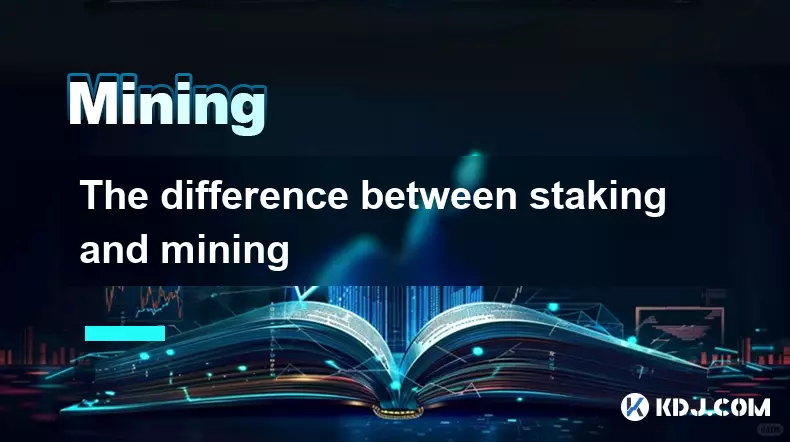
The difference between staking and mining
Sep 24,2025 at 05:18am
Understanding Staking in the Cryptocurrency Ecosystem1. Staking involves holding funds in a cryptocurrency wallet to support the operations of a block...

How to participate in testnet mining?
Sep 22,2025 at 09:18am
Understanding Testnet Mining in the Crypto Ecosystem1. Testnet mining is a method used by blockchain developers to simulate real-world conditions on a...

How to dispose of abandoned mining machines?
Sep 19,2025 at 08:19pm
Assessing the Condition of Abandoned Mining Rigs1. Begin by inspecting each mining machine for visible damage, corrosion, or missing components. Machi...

How to identify high-quality mining pools?
Sep 21,2025 at 03:19pm
Reputation and Track Record1. A mining pool’s reputation is built over time through consistent performance and transparency. Pools that have operated ...
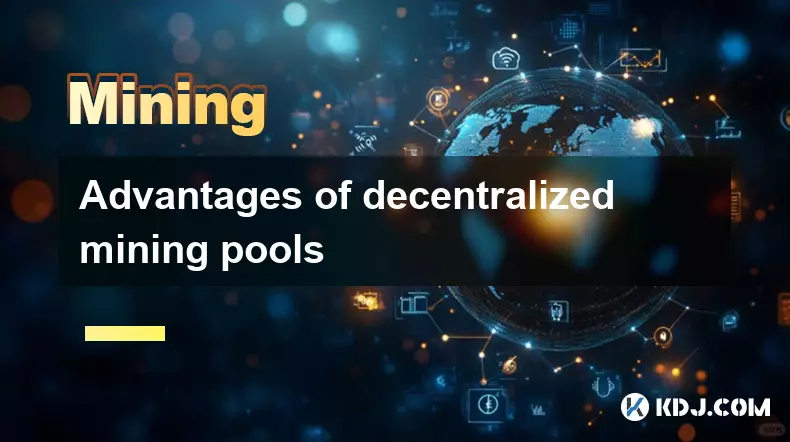
Advantages of decentralized mining pools
Sep 20,2025 at 04:36pm
Enhanced Security and Resistance to Censorship1. Decentralized mining pools operate on blockchain-based smart contracts, eliminating the need for a ce...
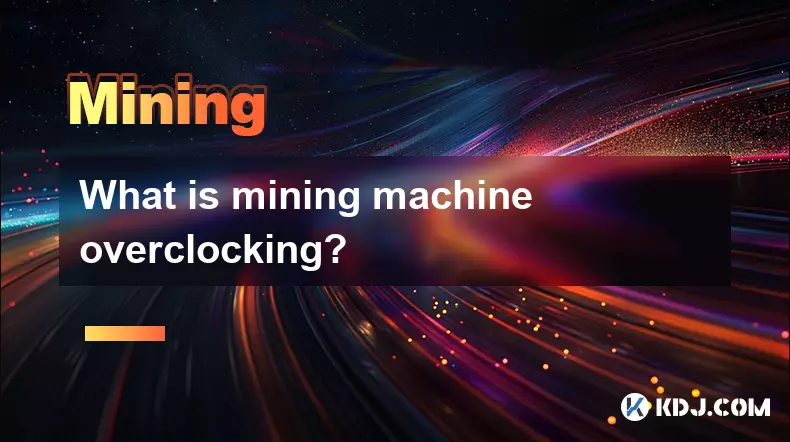
What is mining machine overclocking?
Sep 21,2025 at 07:19pm
Understanding Mining Machine Overclocking1. Mining machine overclocking refers to the process of increasing the operating frequency of a cryptocurrenc...

The difference between staking and mining
Sep 24,2025 at 05:18am
Understanding Staking in the Cryptocurrency Ecosystem1. Staking involves holding funds in a cryptocurrency wallet to support the operations of a block...

How to participate in testnet mining?
Sep 22,2025 at 09:18am
Understanding Testnet Mining in the Crypto Ecosystem1. Testnet mining is a method used by blockchain developers to simulate real-world conditions on a...

How to dispose of abandoned mining machines?
Sep 19,2025 at 08:19pm
Assessing the Condition of Abandoned Mining Rigs1. Begin by inspecting each mining machine for visible damage, corrosion, or missing components. Machi...

How to identify high-quality mining pools?
Sep 21,2025 at 03:19pm
Reputation and Track Record1. A mining pool’s reputation is built over time through consistent performance and transparency. Pools that have operated ...

Advantages of decentralized mining pools
Sep 20,2025 at 04:36pm
Enhanced Security and Resistance to Censorship1. Decentralized mining pools operate on blockchain-based smart contracts, eliminating the need for a ce...

What is mining machine overclocking?
Sep 21,2025 at 07:19pm
Understanding Mining Machine Overclocking1. Mining machine overclocking refers to the process of increasing the operating frequency of a cryptocurrenc...
See all articles





















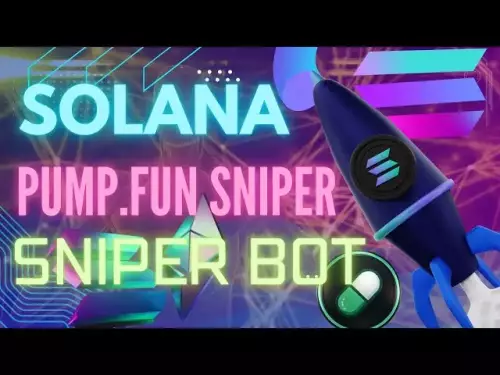




![[Pycoin] PI Coin -Shocking Listance of Pycoin?! 'Rebellion' This time ... Pay attention to #paikoin [Pycoin] PI Coin -Shocking Listance of Pycoin?! 'Rebellion' This time ... Pay attention to #paikoin](/uploads/2025/09/29/cryptocurrencies-news/videos/pycoin-pi-coin-shocking-listance-pycoin-rebellion-time-pay-attention-paikoin/68da82f23cec1_image_500_375.webp)















































